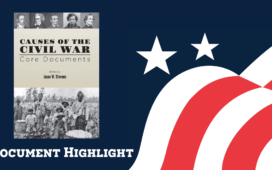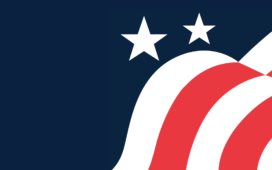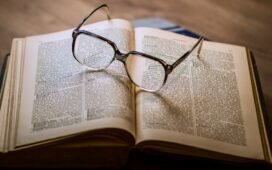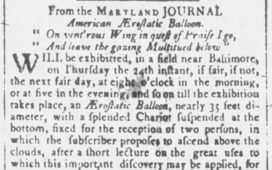By Dr. Jacqueline Shin, MHT National Register Assistant
This week’s blog post describes six National Register-listed historic districts and sites that recently received amendments, highlighting the significance of these places to the movement to secure the vote for women. These amendments, completed by architectural historian Nicole A. Diehlmann, who built on Kacy Rohn’s Women’s Suffrage Movement in Maryland Multiple Property Submission, were approved by NPS in September of 2024. (To learn more about this effort and two other recent amendments, please read Part 1 of this blog series!)

Suffragists distribute the Woman’s Journal in 1913 (LOC).
The Mount Vernon Place Historic District, first listed in the National Register and designated a National Historic Landmark in 1971, was the focal point of many of Baltimore’s most important events relating to women’s suffrage. It was the home of the organizational offices for the Just Government League of Maryland at 817 North Charles Street and the Equal Suffrage League of Baltimore at 829 North Charles Street. Many open-air events and meetings occurred within the district, including major suffrage parades that began either at the two organizations’ headquarters or at the base of the Washington Monument. Several suffrage leaders, including Mary Frick Garrett, Mary Elizabeth Garrett, Edith Houghton Hooker, and Elizabeth King Ellicott, also lived, worked, and advocated for women’s suffrage in the Mount Vernon district.
The Belvedere Hotel and Lyric Theatre, both located within the district, are connected to the 38th annual National American Woman Suffrage Association (NAWSA) convention, held from February 7th to 13th, 1906. This convention was pivotal in the national suffrage movement as a transitional event where older suffrage leaders—such as Susan B. Anthony, Clara Barton, and Julia Ward Howe—passed on leadership of the movement to a new generation of women. The gathering spurred statewide activism and led to the emergence of new leaders and organizations. The official convention lodging was at the Belvedere Hotel, where many of the suffragists stayed and mingled both before and after the days’ activities; the hotel was also the site of smaller group and executive committee meetings. The convention’s many speeches, prayer services, musical performances, and club business meetings were held at the Lyric Theatre.
The Belvedere Hotel (undated), the program cover from the 1906 NAWSA Convention (LOC), and the Lyric Theater (from 1906 NAWSA program)
On the penultimate night of the convention, Susan B. Anthony took the stage at the Lyric; upon making her appearance, she apparently received a standing ovation that lasted ten minutes. After a long career, this was her last address at a women’s suffrage convention, and some of the last remarks she delivered in pubic, as she passed away a month later at the age of 86. The Lyric was also the site of a mass meeting hosted by the Woman’s Suffrage Club of Baltimore in 1909, which had an audience of over 2,000, half of which were men. The featured speakers at this event were Dr. Reverend Anna Howard Shaw and Mrs. Florence Kelly. In 1911, the well-known militant English suffragist Emmaline Pankhurst presented at the Lyric, returning two years later after she had been imprisoned for her activism in London. She spoke before a large crowd and stayed with her friend, Edith Houghton Hooker, at Upland during her visit.
From the left: Emmaline Pankhurst being arrested in 1914 (The Guardian), Edith Houghton Hooker (LOC), and Upland (Photo by Nicole Diehlmann)
Originally a row of four, three-story rowhouses on North Charles Street, Brown’s Arcade was converted into a shopping arcade in 1904 and became the headquarters of the Equal Suffrage League of Baltimore in 1908. Established by Elizabeth King Ellicott, the organization was one of three devoted to women’s suffrage in the city. The office provided space for organizing and hosting events, and was the starting point for many demonstrations. The Equal Suffrage League was expelled from the Maryland Woman Suffrage Association (MWSA) in 1910 when the group introduced their own municipal suffrage bill for Baltimore, which competed with the MWSA’s statewide suffrage bill. Further illustrating divisions within the movement, Ellicott created another statewide organization, the State Equal Franchise League, in 1911, in direct competition with MWSA. The organization published The New Voter, the state’s first suffrage magazine, from 1910 to 1911. Ellicott died suddenly in 1914 and left funds to support the Equal Suffrage League, as well as Goucher College.
Photo 1: Brown’s Arcade. Photo 2: The proposed amendment to the Baltimore City Charter submitted by the Equal Suffrage League in 1910 (Anne Lewis Women’s Suffrage Collection).
The Old Goucher College Historic District was first listed in the National Register in 1978, with its boundary expanded in 1994. The college originally opened as the Woman’s College of Baltimore in 1888 and was located in the middle of the city until it relocated to Towson. The land for the college was donated by John Goucher, who served for a time as a pastor at the nearby Lovely Lane Church. Many faculty members and students at Goucher were active in the women’s suffrage movement. The first regular meeting of the Goucher College chapter of the National College Equal Suffrage League was held in the gymnasium of Bennett Hall in January of 1915, and several Goucher alumnae went on to become leaders in the movement. In February 1917, students and alumnae participated in one of the largest college group protests in front of the White House, protesting President Wilson’s lack of action on women’s suffrage. Goucher College was the recipient of a $25,000 bequest from Elizabeth King Ellicott, which funded a scholarship in her name.
Last but not least, the Fifth Regiment Armory nomination was amended to account for its significance within the women’s suffrage movement as the destination of a notable suffrage parade that took place in 1912. The parade occurred during the Democratic Convention and was intended to get the Democratic Party to publicly support the cause. It was a spectacular and extravagant event, with 1,000 marchers that gathered at the base of the Washington Monument, grand floats, bands, and over 50,000 spectators. Anne Delia Melvin, daughter and sister of suffragists, all of whom were members of the Just Government League, led the parade dressed as Joan of Arc. Costumed women drove chariots flying the banners of western states where women had already won the right to vote. The parade was 15 blocks long, and ended at the Lyric Plaza, with an open-air meeting following. Although the demonstration was not successful in swaying either the Democratic or Republican party, Theodore Roosevelt’s Progressive party did take on a suffrage platform. The Armory is significant as a demonstration center as the final stop of this major suffrage parade.


Postcard view of the Fifth Regiment Armory (Jordan Smith/Flickr) and Joan of Arc in the Suffrage Parade (Maryland Center for History and Culture)
The women’s suffrage organizations of Maryland developed extensive grassroots campaigns, creating affiliated organizations in towns and counties throughout the state. Membership in these groups ranged from working women, such as nurses, teachers, and businesswomen, to those who did not work professionally outside the home. These amendments to National Register nominations focused on districts and properties in Baltimore; earlier amendments added women’s suffrage history to the Westminster Historic District (Carroll County) and the George Washington House (Prince George’s County), with additional amendments to St. Mary’s City Historic District and the State House in Annapolis under review. There is much more exciting work still to be done to illuminate the multiple stages across the state upon which women’s fight for the vote played out.
To learn more about Maryland’s role in the suffrage movement and find information on key suffragists, be sure to check out the StoryMap, “Maryland Women’s Fight for the Vote,” created for MHT by Kacy Rohn, and the multi-media public history project, “Ballot & Beyond,” produced by Preservation Maryland with support from MHT and Gallagher Evelius & Jones. The Maryland Center for History and Culture also has a blog post on the June 1912 Baltimore parade.
There are also several articles on the MHT blog, “Our History, Our Heritage” about the women’s suffrage movement:



















